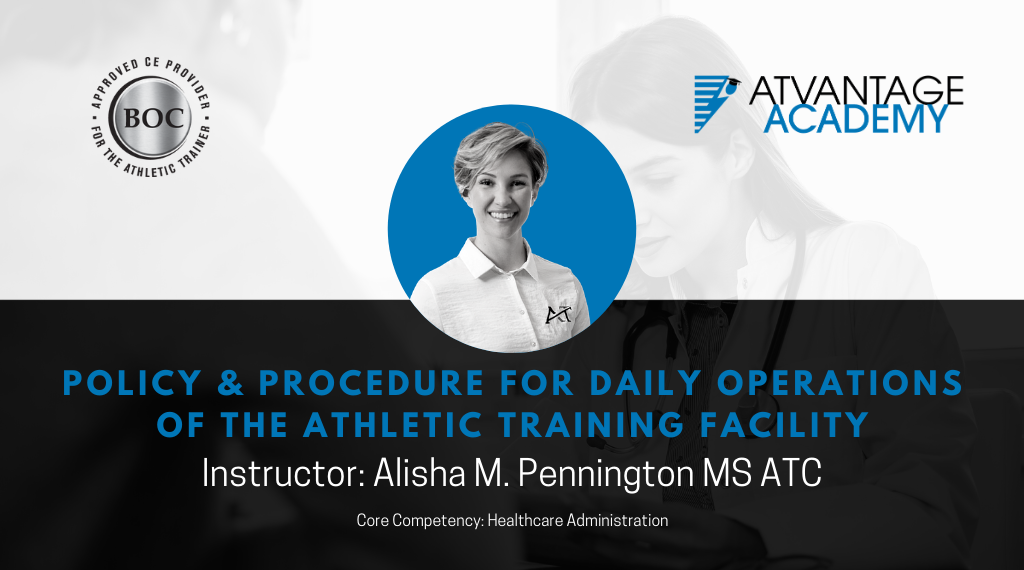Core Competency: Healthcare Administration – Standard 91: Develop, implement, and revise policies and procedures to guide the daily operations of athletic training services.
AT Milestones:
- PBLI-2 Practice Based Learning and Improvement: Quality Improvement. Improves systems in which the athletic trainer provides care.
- PBLI-3 Practice Based Learning and Improvement: Quality Improvement. Learns and improves via performance audits.
- PBLI-4 Practice Based Learning and Improvement: Quality Improvement. Monitors practice with a goal for improvement.
- ICS-2 Interpersonal and Communication Skills: Communicates effectively with patients, families, stakeholders, and the public.
- ICS-3 Interpersonal and Communication Skills: Communicates effectively in interprofessional teams.
- SBP-1 Systems Based Practice: Patient Safety. Recognizes system error and advocates for system improvement.
- SBP-2 Systems Based Practice: Patient Safety. Emphasizes patient safety.
- SBP-4 Systems Based Practice: Interprofessional Teams. Works effectively within an interprofessional team.
Purpose: In accordance with Standard 91 of the 2020 CAATE standards, the athletic trainer should be able to develop, implement, and revise policies and procedures to guide the daily operations of athletic training services. This requires the athletic trainer to have the proper skills required to demonstrate this administrative task, with the understanding of it’s logistical application to their daily practice. A successful completion of this course along with accompanying exercises will demonstrate proficient knowledge in the development, implementation, and revision of policy and procedure related to the daily operations of athletic training services.
Key Learning Objectives:
- Recognize the key components of a policy and procedure manual specific to their setting or organization type.
- Collect information from outside stakeholders, known experts, and identified resources for the development of an inclusive policy and procedure manual.
- Analyze the needs for their patient population, geographic area, clinical setting, organizational structure, and local law in the creation or revision of the policy and procedure manual.
- Evaluate the relevance, legality, and logistics of each portion of the manual by including a multidimensional team and creating an ongoing revision schedule.
- Develop a policy and procedure manual inclusive of all facets specific to their athletic training facility.


